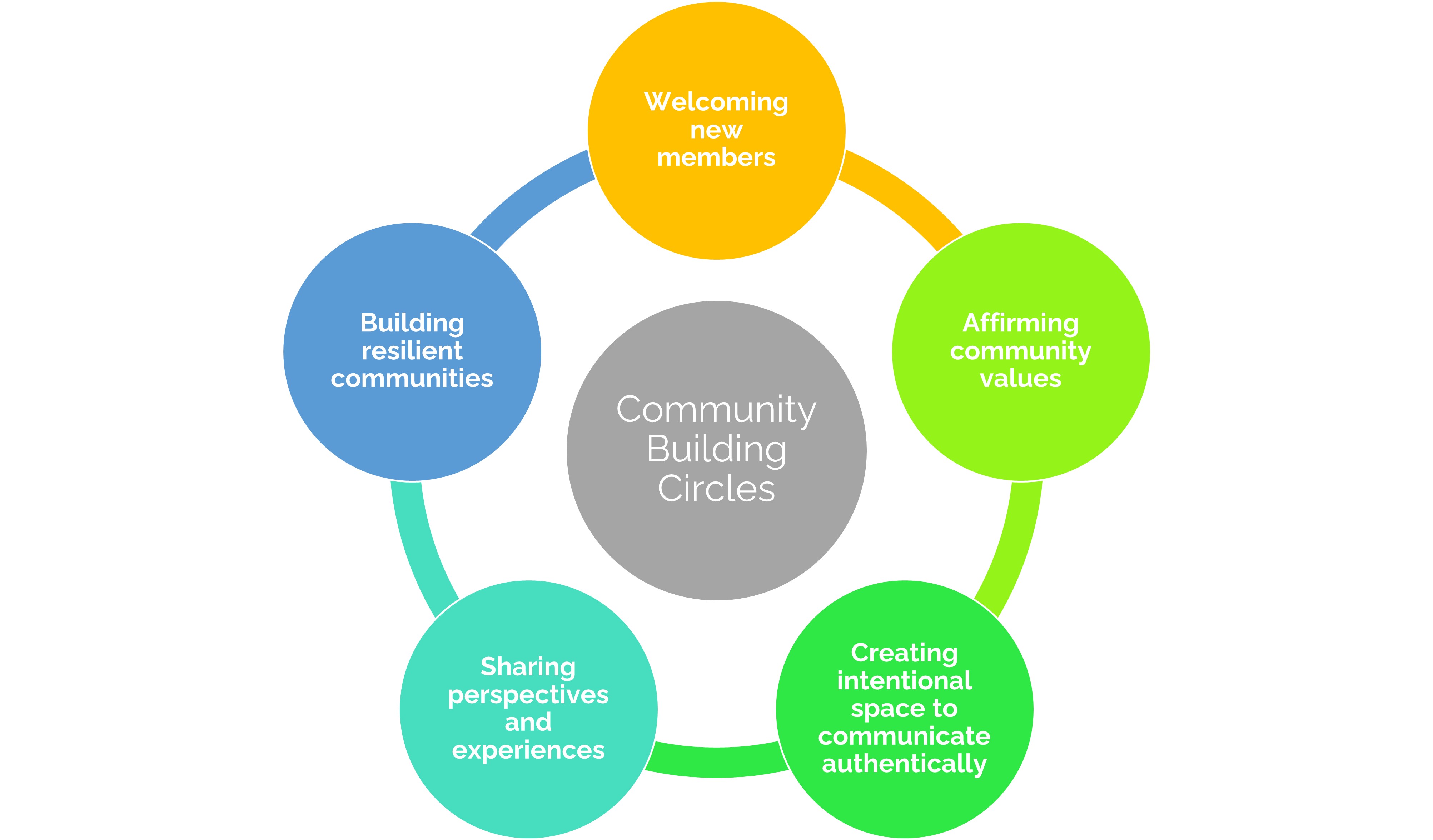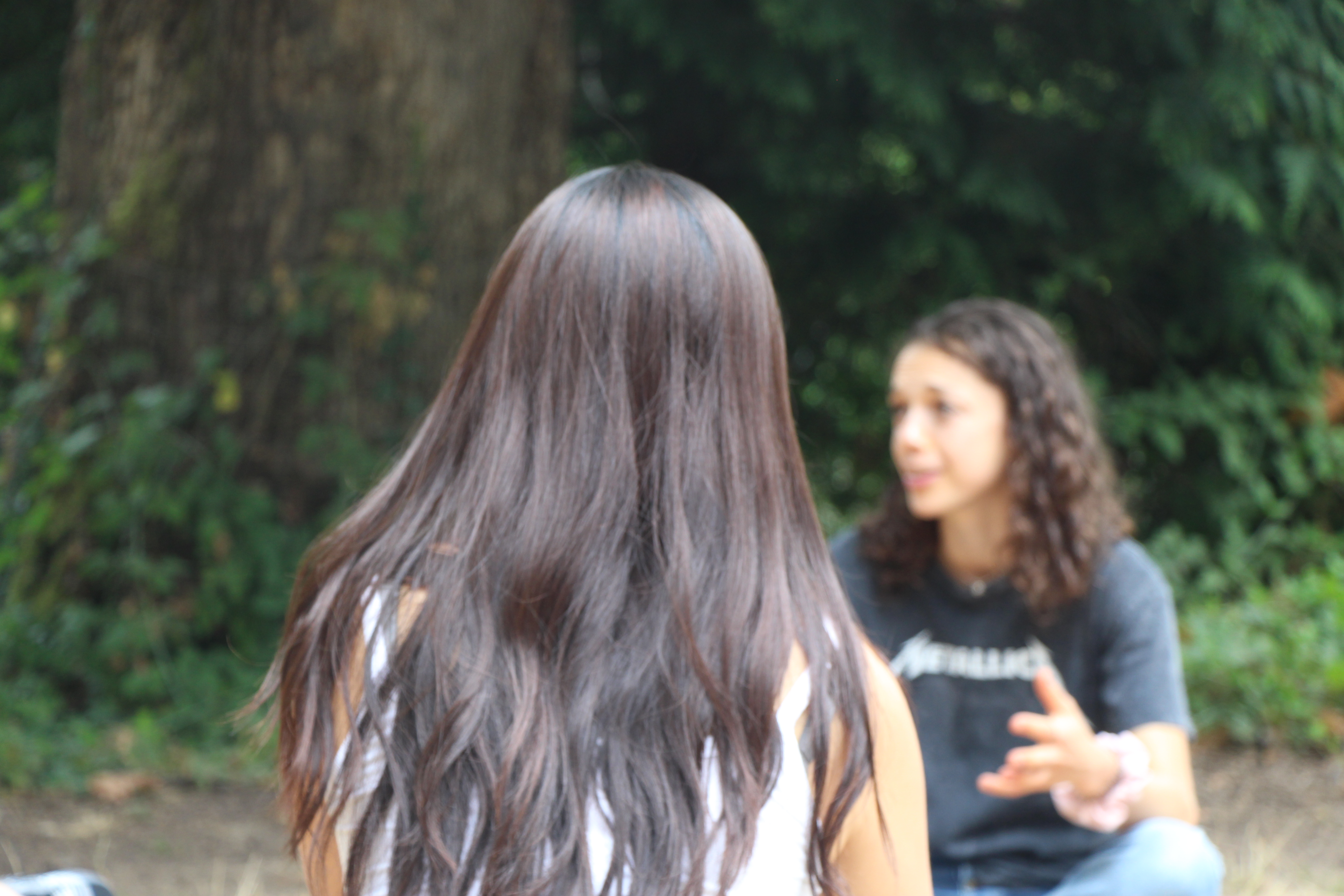Community Building Circles
Creating a foundation for interacting, engaging, and collaborating
What is community?
Community can take many forms and sizes--dorm mates, classrooms, co-workers, departments, clubs, friend groups: any entity in which people engage with one another can be a community, and community building circles help set intentions and build relationships to make those communities more resilient and reduce harm within them. A community involves all the people that you are likely to encounter, collaborate with, or share experiences with. We often talk about the Reed community as an entity, and while Reed proposes a type of community in itself, there are many smaller communities that make up Reed, all of which can grow more cohesive and resilient by taking the time to engage authentically and establish lines of communication that emphasize the experiences that inform people’s perspectives and actions.

Building community through circle
Community building circles are spaces for intentional communication to establish values, share experiences, and build relationships with people sharing a collaborative space. While there is no “typical” community building circle, as all circles are unique, RJ facilitators follow a structure that helps establish a safe and supportive space intended to promote authentic and equitable conversation.

Facilitators begin by acknowledging where Restorative Justice originates, and the indigenous practices that inform our own. While we do not engage in indigenous practices, we do acknowledge that circle-keeping, Peacemaking, and other Restorative modalities are practices that indigenous and Native peoples and tribes have utilized for many years, and these practices both precede and guide our approach to building community and seeking justice.
Facilitators will then establish a circle order which will guide the direction of discussion. They will introduce a talking piece, a physical object that indicates who the speaker is, and explain the rules around sharing and listening in relation to it. At this point, the facilitator will begin the opening ceremony, which helps the circle become a grounded, mindful space for discussion.
Opening ceremonies will differ, but some examples include: reading a poem, a breathing exercise, group stretches, meditation, etc. For certain circles, the circle topic will be introduced at this point. The facilitator will then launch into introductions, following with an ice breaker and check-in question, which are useful to get the group situated and centered in the circle space. These exercises aim to bring everyone into a similar headspace and set the intention for the following circle elements.
After the opening ceremony, the circle members will establish shared values, which provide people the space to share what they need to engage and feel comfortable sharing in circle. Some examples include: non-judgement, showing up to the extent one is comfortable, acknowledging impact over intent.
Following, the circle members will create community agreements, which articulate how people will be together and act toward one another, and are adopted by the consensus of the circle. These may extend beyond the circle space itself, and thus help reinforce community foundations. Some communities may choose to write out these agreements to serve as helpful reminders for continued interactions.
If a circle meets multiple times, it will generally go over the shared values and community agreements each time, giving participants the opportunity to amend, change, or add any they feel necessary to make the circle feel like a safe space.
Once participants have agreed on values, the facilitator will begin the discussion phase, in which community members go answer a series of open-ended questions aimed at building community, always fitted to the context of the circle. These can tap into experiences, concepts, and personal values, among others. Answers can be as specific as feels comfortable. Since the talking piece is passed among all participants, each gets the opportunity to speak and to listen. The facilitator will often also give space for a reflection round after each question to give everyone the chance to engage more deeply into each topic should they feel they want to.
After discussion rounds, we go through a closing ceremony to create a tangible end to the circle space. Giving the circle a clear beginning and end helps to solidify the intentionality behind the circle space. We want to ensure that the circle space feels secure and supportive, which is driven by acknowledging purpose and delimiting the bounds of the circle itself. Circles help solidify general community relations, and affirming spaces for mindful interaction helps community members engage with each other beyond the circle.
When can I use a Community Building Circle?
We encourage community building at all levels and for all types of communities. We can do community building for smaller groups and larger ones alike. We host circles open to the general Reed community, to which students, staff, and faculty are welcome and encouraged to come in the spirit of community. We also can host circles for more specific communities, whether they be dorms, staff, student clubs or groups; any group of people who feel the desire to engage in this type of intentional interactive activity is welcome to come our way!
Vitally, community building circles are meant to establish foundations that guide how a community interacts, setting an underlying understanding between its members through sharing their stories and perspectives, whether that be expectations for how to engage with the community or telling stories that inform how they navigate the world. Forming intentional connections helps community becomes more resilient in the face of harm and prevent unintentional harm.
If you are interested in asking the Restorative Practices Team to lead a community building circle for you, or are interested in getting more information about upcoming community building circles, please email us at restorativepractices@reed.edu or fill out our google form!
All circle processes are a confidential space, and we won’t discuss what happens throughout the process with anyone outside of the circle context.